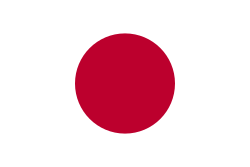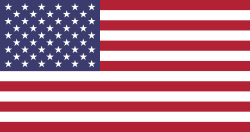Persona 4 Arena
| Persona 4 Arena | |
| Originaltitel | Persona 4 - The Ultimate in Mayonaka Arena |
|---|---|
| År | 2012 |
| Utvecklare | Atlus (P Studio) Arc System Works |
| Utgivare | |
| Genre | Fighting, visuell roman |
| Format | Arkad, Playstation 3, Xbox 360 |
| Arbetslag | |
| Musik | Shōji Meguro |
| Spelserie | |
| Spelserie | Shin Megami Tensei: Persona |
| Uppföljare | Persona 4 Arena Ultimax |
| Distribution | |
| Europa | PS3 och Xbox 360[1][2] 10 maj 2013 28 februari 2013 |
| Japan | PS3 och Xbox 360 26 juli 2012 Playstation Network 1 mars 2012[3] |
| USA | PS3 och Xbox 360 7 augusti 2012 Playstation Network 12 februari 2013 |
Persona 4 Arena (P4A), känt som Persona 4 - The Ultimate in Mayonaka Arena (ペルソナ4 ジ・アルティメット イン マヨナカアリーナ Perusona Fō Ji Arutimetto In Mayonaka Arīna?) i Japan, är ett datorspel i genrerna fightingspel och visuell roman, som utvecklades av Atlus-studion P Studio och Arc System Works till arkadmaskiner, och till spelkonsolerna Playstation 3 och Xbox 360. Konsolversionerna släpptes i Japan den 26 juli 2012, i Nordamerika den 7 augusti 2012, och i Europa den 10 maj 2013. Arkadversionen har bara släppts i Japan.
Spelet är det första spel till Playstation 3 som är regionskodat, vilket innebär att exemplar av det enbart går att spela på konsoler tillhörande samma region som spelet.[4]
Handling
Spelet utspelar sig två månader efter händelserna i Shin Megami Tensei: Persona 4 och två år efter The Answer i Shin Megami Tensei: Persona 3, och inkluderar figurer från båda spelen.[5][6]
Musik
| Persona 4 The Ultimate in Mayonaka Arena Original Soundtrack | |||||||||
|---|---|---|---|---|---|---|---|---|---|
| Nr | Titel | Längd | |||||||
| 1. | Best Friends | 3:49 | |||||||
| 2. | The Ultimate | 1:11 | |||||||
| 3. | Best Friends -instrumental- | 1:42 | |||||||
| 4. | The Fighter | 0:13 | |||||||
| 5. | Sparks Fly | 0:13 | |||||||
| 6. | Reach Out To The Truth -in Mayonaka Arena- | 2:19 | |||||||
| 7. | The Junes Hero | 3:26 | |||||||
| 8. | Like The Dragon | 4:57 | |||||||
| 9. | Princess Amagi-ya | 2:07 | |||||||
| 10. | A Pure-Hearted Beast | 2:44 | |||||||
| 11. | Kuma Kuma Circus! | 2:26 | |||||||
| 12. | Seeker Of Truth | 2:14 | |||||||
| 13. | Heartful Cry -in Mayonaka Arena- | 3:07 | |||||||
| 14. | Missions For The Brilliant Executor | 2:21 | |||||||
| 15. | The Wandering Wolf | 3:15 | |||||||
| 16. | Spirited Girl | 4:01 | |||||||
| 17. | The Ultimate -Stage Edit- | 2:00 | |||||||
| 18. | Shadows Of The Labyrinth | 3:50 | |||||||
| 19. | Who Goes? | 0:08 | |||||||
| 20. | Don't Give Up! | 0:42 | |||||||
| 21. | The Winner | 0:31 | |||||||
| 22. | Subete no Hito no Tamashii no Uta -TV Sign-Off- | 0:26 | |||||||
| 23. | NOW I KNOW | 5:46 | |||||||
Total längd: | 53:41 | ||||||||
Källor
- ^ ”Persona 4 Arena Release Information for PlayStation 3”. GameFAQs. http://www.gamefaqs.com/ps3/641697-persona-4-arena/data. Läst 18 april 2013.
- ^ ”Persona 4 Arena Release Information for Xbox 360”. GameFAQs. http://www.gamefaqs.com/xbox360/641802-persona-4-arena/data. Läst 18 april 2013.
- ^ Jonathan Leo Toyad (23 februari 2012). ”Persona 4 Arena slashes arcades on March 1”. Gamespot. http://www.gamespot.com/news/persona-4-arena-slashes-arcades-on-march-1-6350997. Läst 11 augusti 2013.
- ^ Eric L. Patterson (5 juli 2012). ”Persona 4 Arena To Be First Ever Region-Locked PS3 Release”. EGMNOW. Arkiverad från originalet den 12 oktober 2016. https://web.archive.org/web/20161012184743/http://www.egmnow.com/articles/news/persona-4-arena-to-be-first-ever-region-locked-ps3-release/. Läst 11 augusti 2013.
- ^ Gantayat, Anoop (1 september 2011). ”First Look: Persona 4 Fighting Edition”. Andriasang. Arkiverad från originalet den 21 januari 2013. https://archive.is/20130121011613/http://andriasang.com/comxv2/persona_4_fighter/. Läst 11 augusti 2013.
- ^ Spencer (27 januari 2012). ”Persona 4: The Ultimate In Mayonaka Arena Arrives In Arcades This March”. http://www.siliconera.com/2012/01/27/persona-4-the-ultimate-in-mayonaka-arena-arrives-in-arcades-this-march/. Läst 11 augusti 2013.
| ||||||||||||||||||||||||||||||||||||||
Media som används på denna webbplats
The Flag of Europe is the flag and emblem of the European Union (EU) and Council of Europe (CoE). It consists of a circle of 12 golden (yellow) stars on a blue background. It was created in 1955 by the CoE and adopted by the EU, then the European Communities, in the 1980s.
The CoE and EU are distinct in membership and nature. The CoE is a 47-member international organisation dealing with human rights and rule of law, while the EU is a quasi-federal union of 27 states focused on economic integration and political cooperation. Today, the flag is mostly associated with the latter.
It was the intention of the CoE that the flag should come to represent Europe as a whole, and since its adoption the membership of the CoE covers nearly the entire continent. This is why the EU adopted the same flag. The flag has been used to represent Europe in sporting events and as a pro-democracy banner outside the Union.

